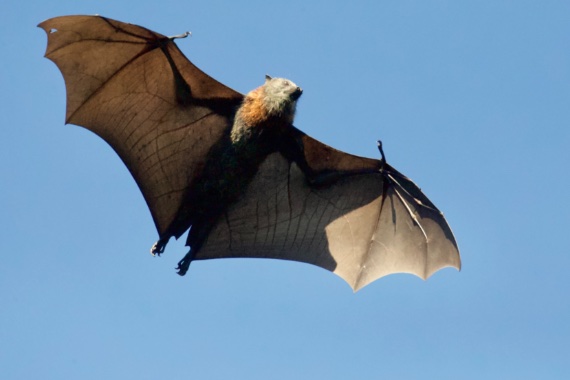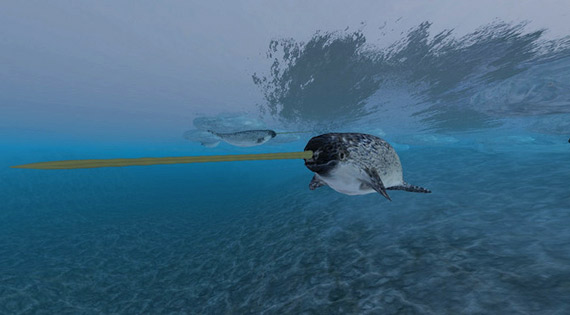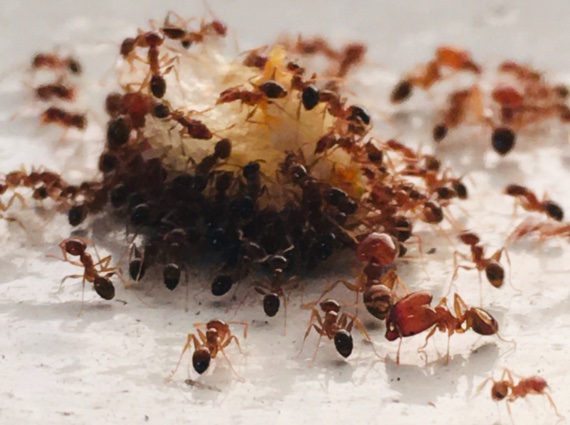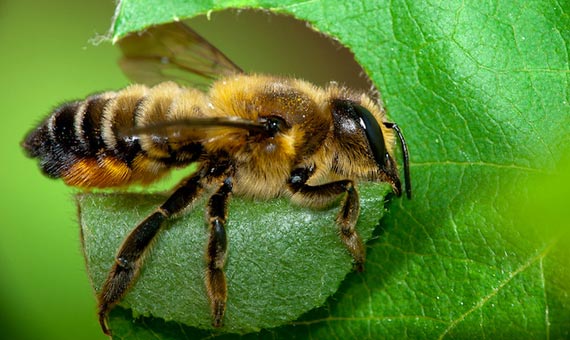Most humans do not often wonder if reality is truly as we perceive it, but this question has fascinated philosophers since antiquity. If Plato or Kant were alive today, they would probably be astonished at all that science has revealed about the reality around us that we do not perceive, but that many other species do. This is a review of some of the animal senses that are the closest thing to real superpowers, and that provide their holders with a version of the world very different from ours.
A map of sound
The ability of bats to map their surroundings through sound is one of the most studied animal senses. Contrary to popular belief, these flying mammals are not blind, but their eyes are of little use to them when they catch insects in flight at night. The shrieks of bats, inaudible to the human ear, bounce off their surroundings and their moving prey. The timing of the return signal, its direction and change of frequency—due to the Doppler effect, like when an ambulance with a wailing siren passes by—allow them to hunt with incredible accuracy. This ability is based on an innate knowledge of the speed of sound, so that c In other words, for a bat, an insect is not one and a half metres away, but nine milliseconds.

Interestingly, several experiments have shown that with some training humans can also learn to use this echolocation sense, using sounds such as tongue clicks. Obviously we can’t get anywhere near the level of dexterity of bats, but researchers have been able to get participants in these studies to learn to avoid obstacles and to recognise the shape and orientation of objects.
X-ray vision
The sonar system of dolphins and toothed whales is actually the same echolocation system used by bats, only underwater. The sounds produced by these marine mammals allow them to form a mental map of their surroundings in three dimensions. But this ability is even more incredible—the sound waves emitted by dolphins can penetrate through certain objects and soft tissues, providing the animal with a kind of X-ray vision of their possible prey or threats.

One peculiar case is that of the narwhal. This marine unicorn, whose front appendage is really a very specialized left canine tooth, lives and hunts under the huge ice sheets of the Arctic, always finding some small gap to take a breath. How does it do this? A study has found that narwhal sonar is the most directional of all known, giving it extraordinary precision.
According to what Kristin Laidre of the University of Washington, USA, the co-author of the study, explained to OpenMind, the narwhale sonar is a “highly evolved” mechanism that allows these animals to obtain detailed information, enabling them to routinely submerge up to 1,500 meters. “Their use of sound is critical for finding food, navigating the dense sea ice and communicating,” says Laidre.
Receptors for finding blood
If we bring our hand close to a ceramic hob, we can feel the heat without touching it, thanks to the sensory neurons in our skin. But we can only perceive temperatures above 43°C. For other species, the perception of heat or thermoregulation is an essential sense that helps them to recognize their surroundings. Vampire bats use their nose and upper lip, which come equipped with heat receptors, that allow them to detect temperatures of 30°C at a distance of up to 20 centimetres. This facilitates the localization of their prey and even the areas of skin that line the blood vessels, letting them know the best place to puncture in their search for blood.

Some vipers and boas detect the heat of their prey thanks to specialized facial pit organs. The direction of the source is given by the part of the pit that perceives the heat and the presence of pits on both sides of the head allows them to measure the distance.
Electric traffic
Electricity is invisible to us, but for some species it is like a traffic signal that guides them toward their objective. Sharks and other fish can detect it thanks to a set of canals filled with a gelatinous material, which are open to the exterior through pores in the skin. These organs, which sharks have on the head, are called ampullae of Lorenzini. A similar system is present in the curious beak of the platypus, with which they can locate their prey in deep and turbid waters. Platypuses and echidnas are the only mammals with this system, but the Guiana dolphin, which inhabits the Atlantic coasts of Central and South America, is also able to detect the electricity of nearby fish through holes in its snout that other mammals use to house whiskers.

A curious case is that of bumblebees. In 2016, a study found that these insects accumulate a positive charge during flight, and that the attraction to the negative charge of the flowers moves the hairs of their legs, which helps the bumblebee to locate its target. The pollinated flowers then change their electrical charge, thereby averting other insects from visiting the same flower.
Navigating with light
The eyes of some insects, and also those of other animals such as octopus, have a virtue that ours lack: they are able to distinguish polarized light, meaning light that has a specific vector orientation in space. Being able to take advantage of these different orientations of light in the sky would be useful for navigation, and that is exactly what is achieved by those ants or bees capable of traveling great distances to return to their anthills or hives. They manage the feat thanks to the dorsal edge of their eyes being able to perceive polarized light. The discovery of this mechanism of the insects today serves as an inspiration for engineers in search of new navigation systems that do not depend on the capture of satellite signals.

Ultraviolet flowers
Perhaps it may seem to us that flowers are there to decorate nature, but the truth is that they compete with each other in attracting the attention of insects, their pollinators. The colours that we can see in them are irrelevant; what really matters is to catch the interest of insects, and they do not see the same thing as us. Many flowers that for humans have a smooth colouring hide a striking pattern visible only in the ultraviolet range of the spectrum, something that bees can see.
Natural Compasses
The first observations that certain animals tend to align their bodies with the north-south axis of the Earth’s magnetic field date back decades, but for years scientists found no explanation for this ability that, according to what has been confirmed, is present in creatures ranging from bacteria to vertebrates.

Different species are now thought to use different systems. For example, there is a type of pigment called cryptochrome that is present in the eye of some species and is activated with blue light by a quantum mechanism sensitive to magnetism. It is thought that this would allow these animals to see the terrestrial magnetic field in the form of a blue trail. However, magnetic particles have also been found in the beaks of some birds. In addition, bees have a ring of magnetite granules in their abdomen that acts as a natural compass and allows them to orient themselves during their flights away from the hive.
Some scientists have been trying for decades to demonstrate a sense of magnetoreception in humans as well. Our cells respond to magnetic fields, our retina contains a cryptochrome that is sensitive to magnetism, and even our brainwaves can be altered by this stimulus. While experiments have hinted at the idea that perhaps the Earth’s magnetic field might be able to guide us, no solid evidence has ever been obtained.
Comments on this publication